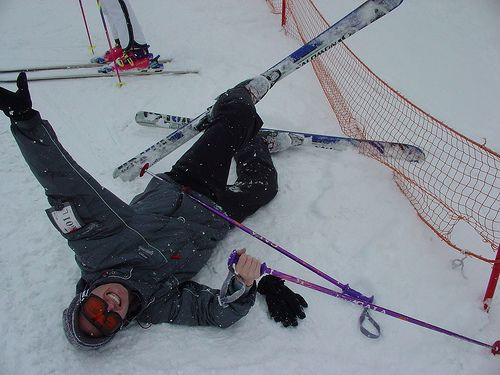Can Clumsiness Be Cured? How Accident-Prone People Can Stop Stumbling Simply By Exercising Their Brain

Everyone's taken an awkward fall or tripped going up the steps. But for the people whose daily lives are afflicted with this accident-prone behavior, respite may be on the horizon. Your clumsiness could be curable.
Research from the University of Delaware (UD) in recent years has accumulated a wealth of information that suggests injury-prone and accident-prone people — who, in more honest days, were known as "clumsy" — can cure themselves of the awkward imbalances, simply through enhancing their cognitive function.
Reprogramming The Neural Network
While this task may seem daunting, the UD researchers claim the brain training can actually be enjoyable.
"It's hard to say at this point how much we can alter these characteristics with training, but certainly the brain has great potential for learning and adaptation," said Charles "Buz" Swanik, assistant professor of health sciences at UD and leader of the 2007 study. "Controlling stress and anxiety must be considered, as both cause changes in muscle tone and concentration and the narrowing of our attentional field."
Swanik's team focused on knee injuries among athletes. These weren't injuries caused by other players crashing into the person and tearing their ligaments; the anterior cruciate ligament (ACL) is the most common and most devastating injury athletes incur on their own, often through a misstep or awkward landing. ACL injuries can be career-ending.
The team wanted to know why certain players received ACL tears when others didn't. To test this, they looked at 1,500 athletes at 18 universities during the preseason, and gave them a range of neurological and cognitive tests. The baseline tests also served as a reference for when athletes sustained an injury later in the season.
As the athletic season began, 80 people emerged with noncontact ACL injuries. The team took these 80 athletes and compared them with 80 non-injured people in the control tests — comparing them across sport, height, weight, age, gender, position, and years of collegiate experience.
In analyzing the data, the athletes who sustained injuries had demonstrated much slower reaction time and processing speed, and performed worse on visual and verbal memory tests compared to the control group.
"These results suggest that slower processing speed and reaction time, as well as lower visual and verbal memory performance," Swanik said, "may predispose certain individuals to errors in coordination during physical activity that can lead to injury."
The implications of these results, his team argued, were that neurocognitive testing could have preventative effects as well. Perhaps training the brain to be more mindful, adept at memory, and quicker, could reduce the amount of times one drops an egg or spills a drink.
Teaching The Brain How To Think
Swanik has been studying clumsiness for several years, with a recent study finding a full one-third of people are more likely to have an accident than others, Today reports.
"They can't create a plan for what's going to happen next," Swanik said of the accident-prone. "And it could be within one-tenth or two-tenths of a second and you're exposed to whatever is around you that could hurt you."
Also employing these tests is Jim Buskirk, the physical therapist for the professional ice hockey team, the Chicago Wolves. Buskirk has used various neurocognitive tests to diagnose in his athletes which areas of their mobility could benefit from preventative training.
"I felt myself being a little clumsy, dropping things," said Wolves player, Kevin Doell, who's recovering from a concussion he's been rehabilitating for two months of physical therapy with Buskirk. "My eyes aren't catching up to what I want to do or something."
Buskirk employs eye-tracking technology, inner-ear electrodes for balance, visual proprioception tests — measuring hand-eye coordination — and moving platforms that track equilibrium and mental processing. The results of these tests spell out to patients how well their brain handles multiple sources of information simultaneously. The worse they perform at each test, the clumsier they are.
The Cure
Depending on the severity of such imbalances, Buskirk advises people to perform the same tests as part of an ongoing process similar to physical therapy.
"This is an equilibrium and balance system processing problem, where when you're trying to do more than one thing at a time, things aren't being processed 100% correctly," he said. "And it manifests itself with a physical anomaly causing you to just be clumsy."
In the end, however, Buskirk advises patients not to be overly concerned with their clumsiness if it doesn't seriously impact their lives. People who sit at a desk eight hours a day and occasionally spill their coffee rarely need to worry.
"If your profession involved climbing up ladders and doing things up on scaffolds," Buskirk admits, "then I'd be a lot more concerned and a lot more worried."
Published by Medicaldaily.com



























